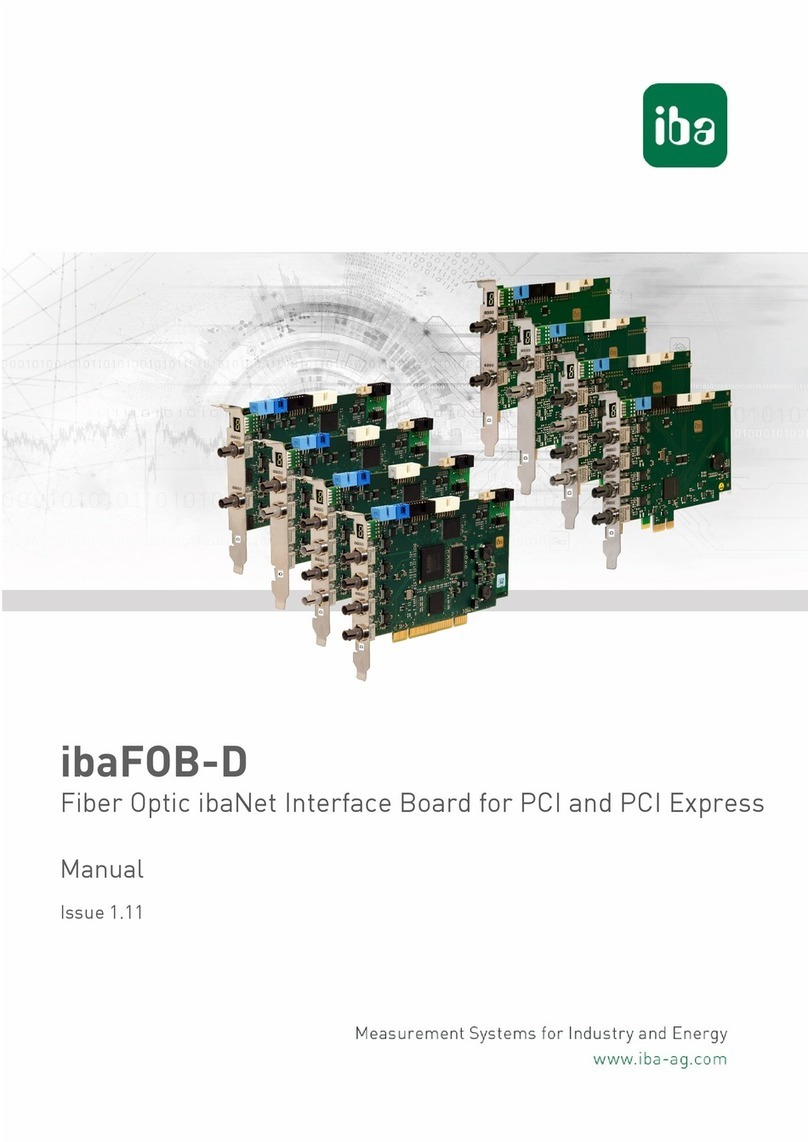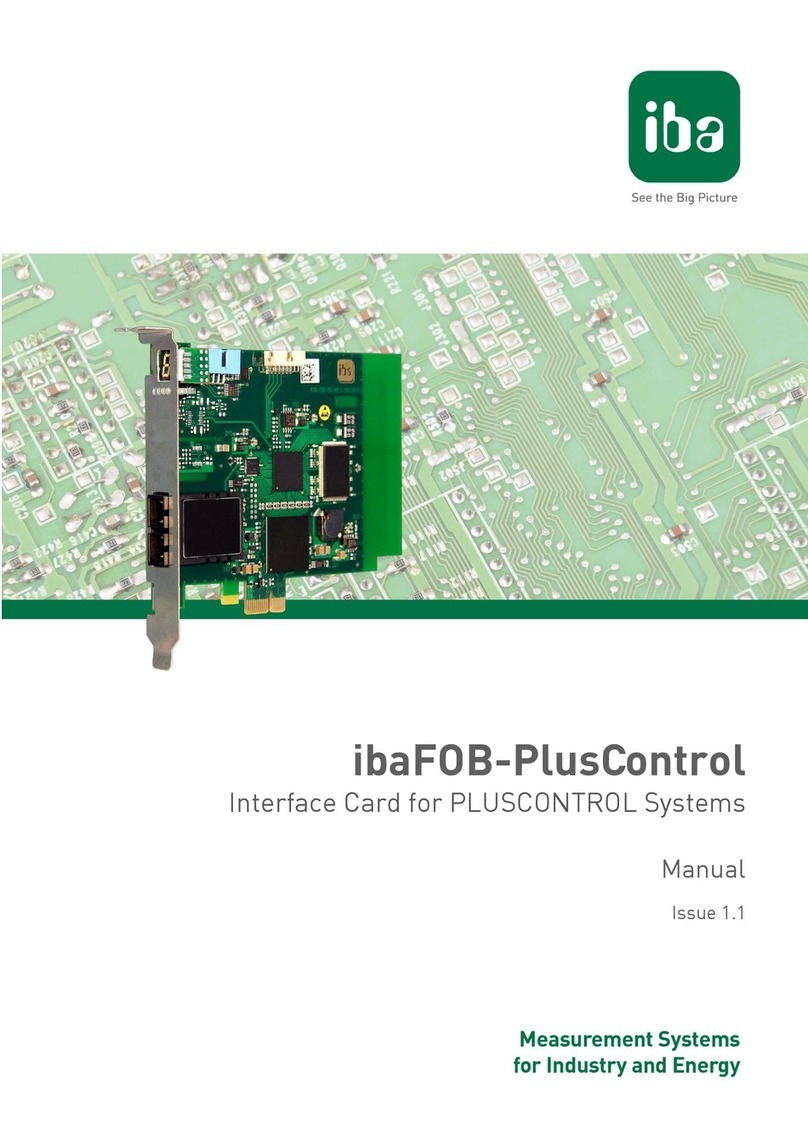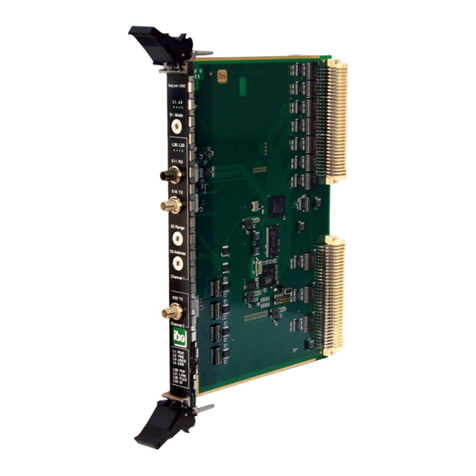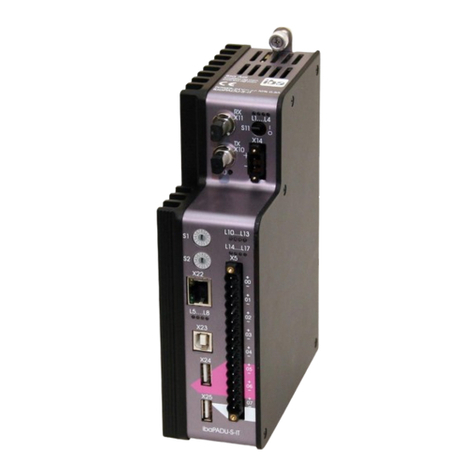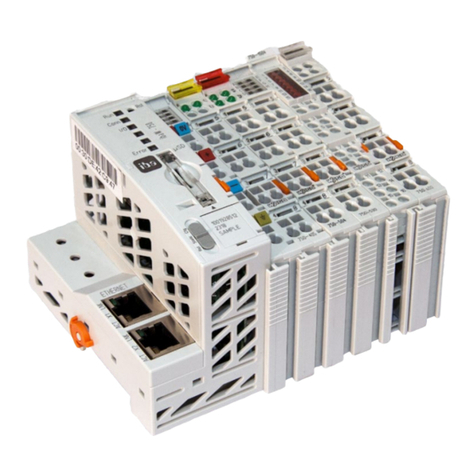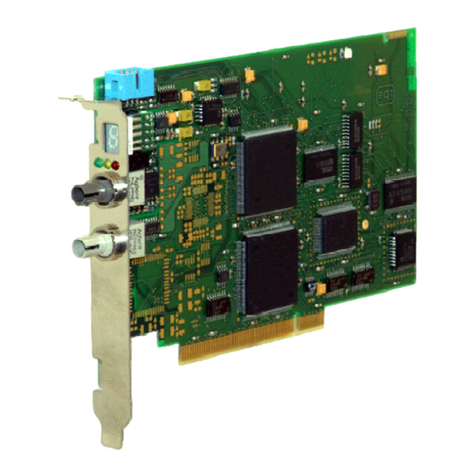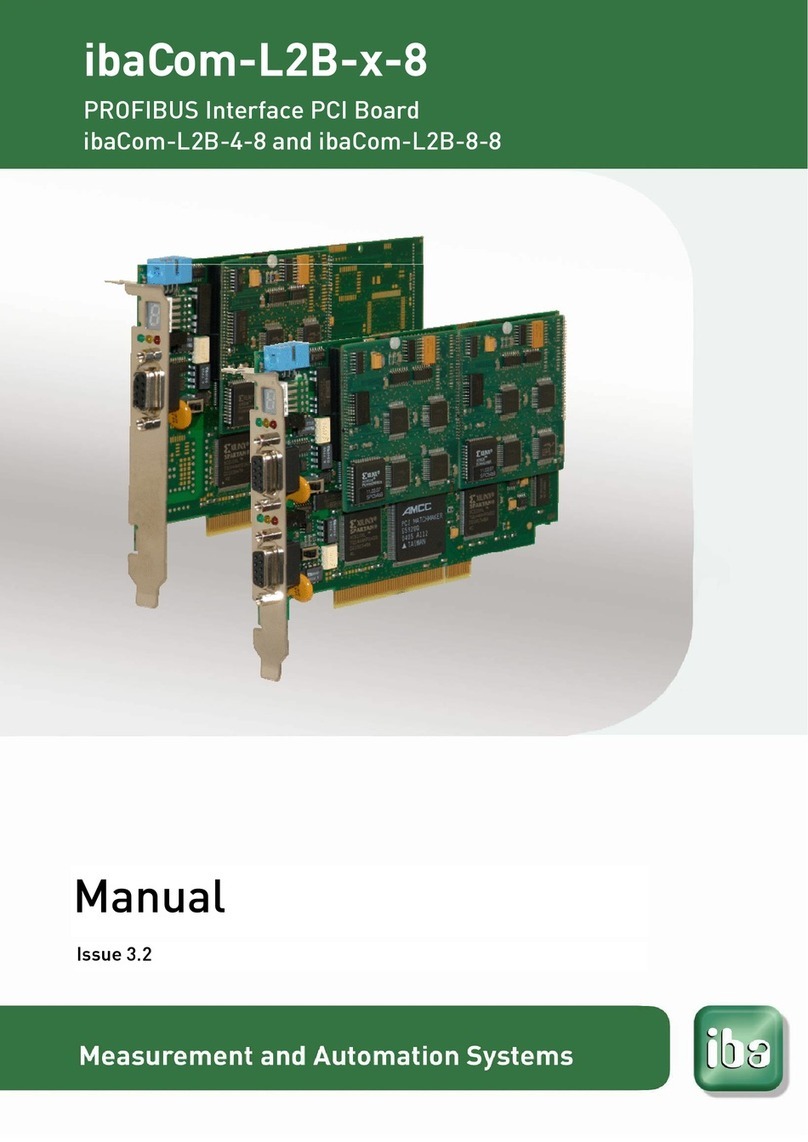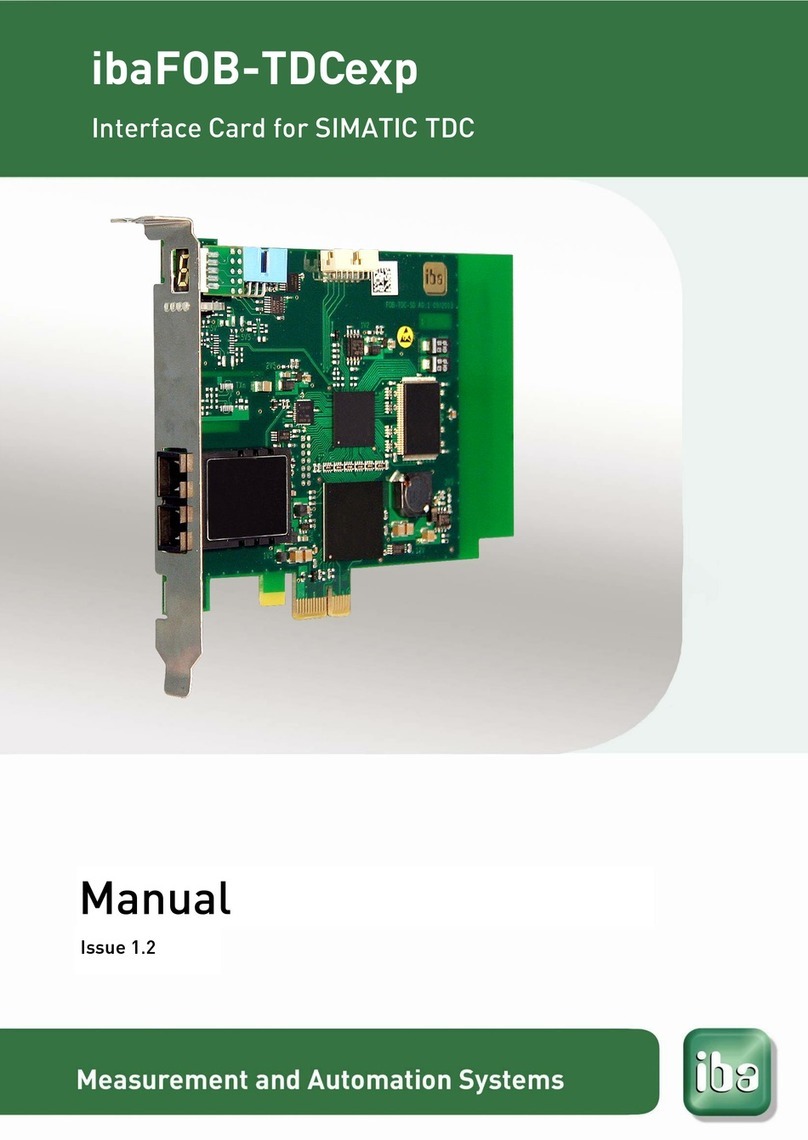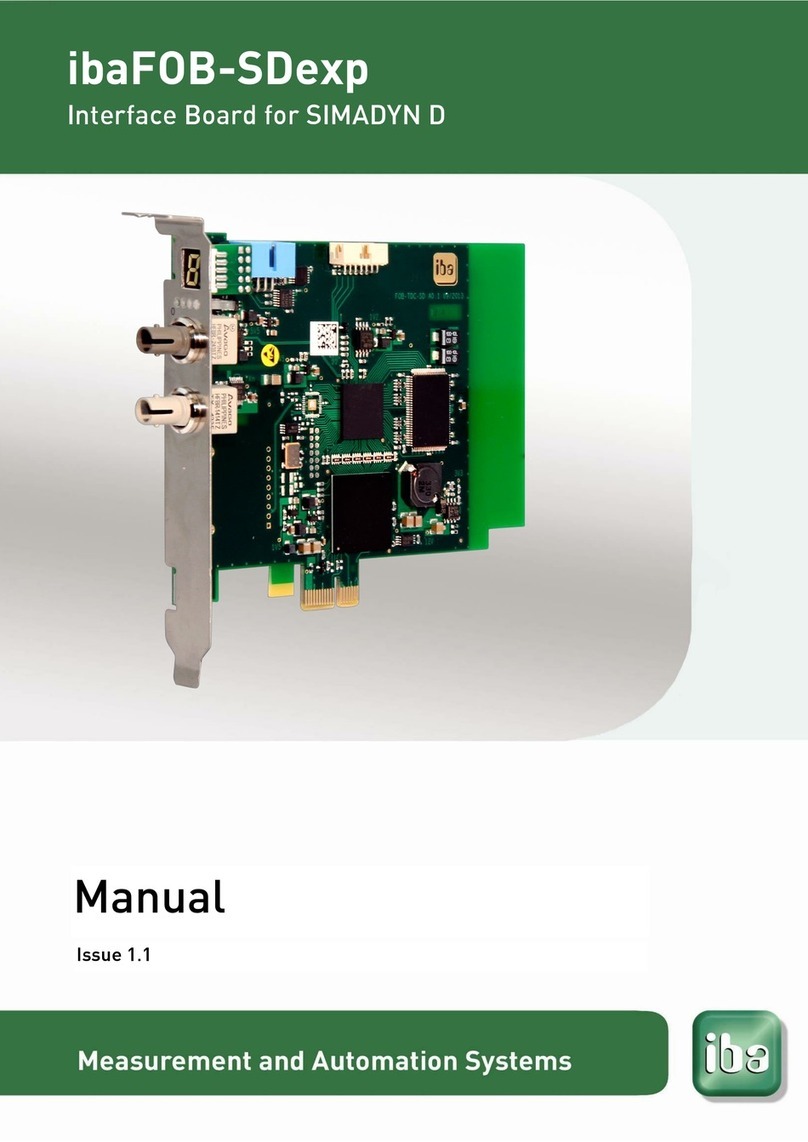
Issue 1.9
8.3 Supported ibaNet transfer protocols ............................................................ 22
9Initial start-up ................................................................................................ 23
9.1 Default settings ........................................................................................... 23
9.1.1 User accounts ............................................................................................. 23
9.1.2 Network parameters .................................................................................... 23
9.1.3 Host name................................................................................................... 23
9.1.4 Set back to default settings ......................................................................... 24
9.2 Network settings.......................................................................................... 24
9.2.1 Establish communication to the device via the network ............................... 24
9.2.2 Establishing communication to the device via FO cable .............................. 26
9.2.3 Network settings on the Web interface ........................................................ 27
9.2.4 Network settings directly on the device........................................................ 27
9.3 Time settings............................................................................................... 30
9.3.1 System time ................................................................................................ 30
9.3.2 Time synchronization of the local ibaPADU-S-IT-2x16 system..................... 31
9.4 Make settings on the Website...................................................................... 33
9.4.1 Accessing the Website ................................................................................ 33
9.4.2 Website structure ........................................................................................ 35
10 Updates ......................................................................................................... 41
10.1 Update via Web Interface ............................................................................ 41
10.2 Update via ibaPDA...................................................................................... 42
10.3 Auto-update of the modules ........................................................................ 42
11 iba applications............................................................................................. 44
11.1 ibaLogic-V5 ................................................................................................. 44
11.1.1 Configuring ibaPADU-S-IT-2x16 as platform................................................ 44
11.1.2 Automatic update of the ibaLogic-V5 version............................................... 47
11.1.3 Configuring signals...................................................................................... 48
11.1.4 DAT_FILE_WRITE function block................................................................ 55
11.1.5 Configuring the debounce filter.................................................................... 57
11.1.6 Saving the ibaLogic-V5 program on runtime................................................ 58
11.1.7 Deleting an ibaLogic-V5 program in ibaPADU-S-IT-2x16............................. 59
11.2 ibaPDA........................................................................................................ 60
11.2.1 Configuration in the I/O Manager................................................................. 60
11.2.2 PADU-S – General tab ................................................................................ 62
11.2.3 PADU-S – Diagnostics tab........................................................................... 63
11.2.4 PADU-S – Analog tab .................................................................................. 64
11.2.5 PADU-S – Digital tab ................................................................................... 64
11.2.6 ibaPADU-S-IT-2x16 – General tab............................................................... 65
11.2.7 ibaPADU-S-IT-2x16 – Digital tab ................................................................. 66
11.2.8 Diagnostics signals...................................................................................... 67
12 Technical Data............................................................................................... 70
12.1 Main data .................................................................................................... 70
12.2 Interfaces .................................................................................................... 71
12.3 Digital inputs................................................................................................ 72
